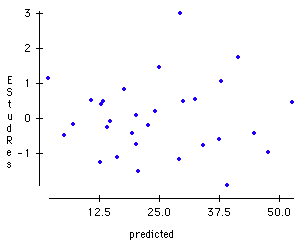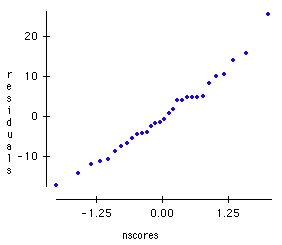Scatterplots, correlation, and simple regression can be used to examine the relationships among the individual variables. Simple regressions of taste on each of the chemical concentration variables show that all three chemicals are significant predictors of flavor. However, in regressions of taste on each pair of chemicals, acetic acid is no longer significant. Multicollinearity may be a problem in these regressions since the correlation between each pair of chemicals exceeds 0.60.
The best two-variable regression model is the regression of "taste" on "H2S" and "Lactic". Adding "acetic" to the model does not change the value of R-squared, and actually decreases the adjusted R-squared and the F-ratio. Scatterplots and normal probability plots of the residuals indicate no violations of the assumptions of the model. The images below correspond to this two-variable model.

